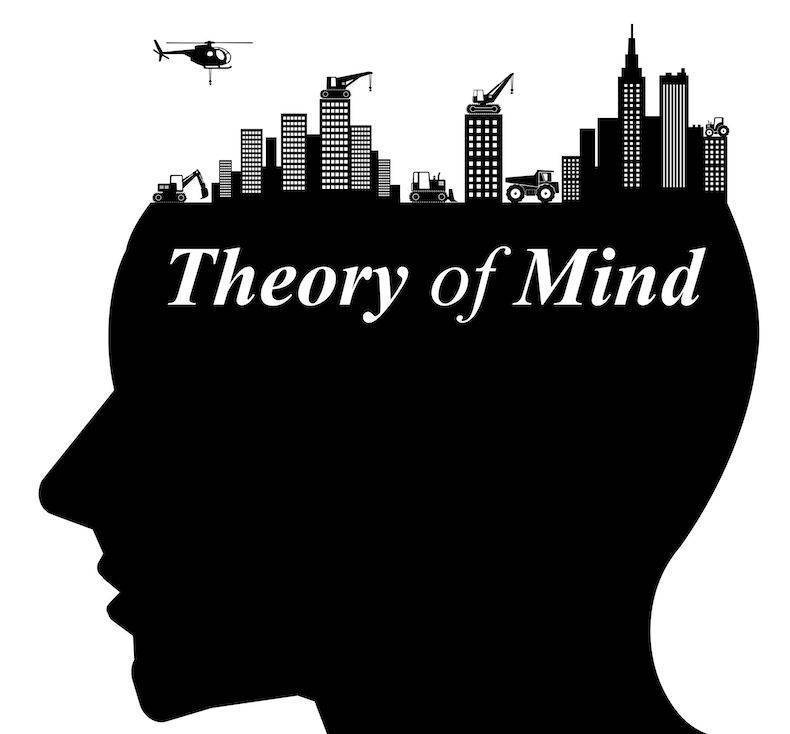
Vignette 1: Susan was visiting with the couple next door and listening to the description of the kitchen remodel they had recently finished. As Susan was replying with a description of changes she and her husband Tom were planning for their kitchen, Tom walks into the room in time to hear her say, “I like your granite countertops. My countertops are too old. I’d love to get new ones.”
Later on, in the privacy of their home, Tom erupts, obviously irritated, “What did you mean, ‘my countertops.’ Why is it you always think about yourself? The countertops are ours, not yours.”
Vignette 2: John, a noted cookbook author, was preparing a new dish for dinner, but something isn’t going right with the recipe. After the dish is cooked and cooled down, he tastes it and is noticeably upset. Against his advice, Carol decides to have some for lunch. She says, “great job, John. It tastes fine to me. You were wrong this time!”
In a 2001 article, the noted autism researcher Simon Baron-Cohen wrote, “By theory of mind we mean being able to infer the full range of mental states (beliefs, desires, intentions, imagination, emotions, etc.) that cause action. In brief, having a theory of mind is to reflect on the contents of one’s own and other’s minds. Difficulty in understanding other minds is a core cognitive feature of autism spectrum conditions. The theory of mind difficulties seems to be universal among such individuals.”
For many adults with Autism Spectrum Disorder (ASD), mindblindness, or lack of a theory of mind, creates significant barriers to communication and closeness. These barriers often lead those nearest to someone with ASD to feel, whether real or perceived, a lack of awareness and understanding from that person. It as if who they are with does not know what they are thinking and why, as though the person with ASD is incapable of putting themselves into the shoes of someone else and forming an idea or understanding of the thoughts, beliefs, emotions, behaviors, and intentions of another person.
In the first vignette, Tom assumes Susan is acting as though their kitchen is her own. He doesn’t consider that her description of “my countertops” was reasonable given that she was talking to their neighbors alone, without his presence. Although she might have also referred to the countertops as “ours,” thinking at that moment in the first person made sense from her perspective. Had Tom been able to imagine himself in her place, talking to the neighbors by himself, the phrase, “my countertops,” very well could have made sense.
In the second vignette, Carol doesn’t seem to recognize that John has good reason for his concern about the dish he was preparing, being the experienced cook he is. The fact that he advised her not to taste it was additional information that something was probably wrong. While Carol’s statement that his cooking tasted fine and her complimenting him for it might seem like a simple act of kindness and consideration, in fact it didn’t match the verbal and nonverbal signals John was communicating. It was as if Carol expressed her own belief about the dish and assumed John had the same reaction, rather than inferring what he thought based on what he had said and how he had said it.
Mindblindness vs. Theory of Mind vs. Empathy
The two vignettes above are intended to illustrate what occurs when a person has difficulty inferring from someone’s behavior what they are thinking and feeling. It is as though they are blind to others’ actual states of mind, assuming instead the same intentions, thoughts, feelings, and desires they have. As Baron-Cohen states, this is characteristic of people with ASD and one of the primary indications of this condition.
Mindblindness, or an inadequate theory of mind, is not the same as lacking empathy, although these terms often are used interchangeably. Empathy refers to understanding and sharing others’ feelings and does not explicitly encompass knowledge of another person’s thoughts, beliefs, intentions, and unstated assumptions.
A person who has trouble putting themselves in the mental “shoes” of someone else is not necessarily blind to what other people feel. It does not mean they are indifferent, apathetic, or callous. It may seem as though it is the same, given the discordant way someone with mindblindness may react in emotionally charged situations, but that has more to do with not understanding how someone might be feeling than not caring how they feel.
